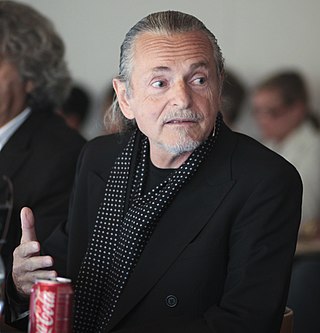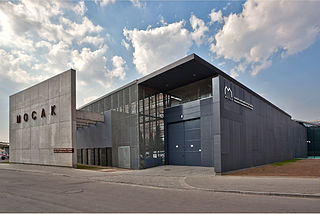Xenology may refer to:
- Xenology, studies of aliens (foreigners or extraterrestrials)
- Sequence homology § Xenology, homology resulting from horizontal gene transfer
- Krzysztof Wodiczko § Xenology, an artistic concept of Wodiczko
Xenology may refer to:
Homology may refer to:
Reduction, reduced, or reduce may refer to:

Algebraic topology is a branch of mathematics that uses tools from abstract algebra to study topological spaces. The basic goal is to find algebraic invariants that classify topological spaces up to homeomorphism, though usually most classify up to homotopy equivalence.

In biology, homology is similarity due to shared ancestry between a pair of structures or genes in different taxa. A common example of homologous structures is the forelimbs of vertebrates, where the wings of bats and birds, the arms of primates, the front flippers of whales and the forelegs of four-legged vertebrates like dogs and crocodiles are all derived from the same ancestral tetrapod structure. Evolutionary biology explains homologous structures adapted to different purposes as the result of descent with modification from a common ancestor. The term was first applied to biology in a non-evolutionary context by the anatomist Richard Owen in 1843. Homology was later explained by Charles Darwin's theory of evolution in 1859, but had been observed before this, from Aristotle onwards, and it was explicitly analysed by Pierre Belon in 1555.
In mathematics, homology is a general way of associating a sequence of algebraic objects, such as abelian groups or modules, with other mathematical objects such as topological spaces. Homology groups were originally defined in algebraic topology. Similar constructions are available in a wide variety of other contexts, such as abstract algebra, groups, Lie algebras, Galois theory, and algebraic geometry.
Singular may refer to:

Medea: Harlan's World is a 1985 collection of science fiction short stories by different authors, all taking place on the same fictional moon. It was an experiment in collaborative science fictional world-building, featuring contributions by Hal Clement, Frank Herbert, and others.
Poincaré sphere may refer to:

Krzysztof Wodiczko is a Polish artist known for his large-scale slide and video projections on architectural facades and monuments. He has realized more than 80 such public projections in Australia, Austria, Canada, England, Germany, Holland, Ireland, Israel, Italy, Japan, Mexico, Poland, Spain, Switzerland, and the United States.
In mathematics, Khovanov homology is an oriented link invariant that arises as the cohomology of a cochain complex. It may be regarded as a categorification of the Jones polynomial.
In mathematics, Floer homology is a tool for studying symplectic geometry and low-dimensional topology. Floer homology is a novel invariant that arises as an infinite-dimensional analogue of finite-dimensional Morse homology. Andreas Floer introduced the first version of Floer homology, now called Lagrangian Floer homology, in his proof of the Arnold conjecture in symplectic geometry. Floer also developed a closely related theory for Lagrangian submanifolds of a symplectic manifold. A third construction, also due to Floer, associates homology groups to closed three-dimensional manifolds using the Yang–Mills functional. These constructions and their descendants play a fundamental role in current investigations into the topology of symplectic and contact manifolds as well as (smooth) three- and four-dimensional manifolds.
The notion of pushforward in mathematics is "dual" to the notion of pullback, and can mean a number of different but closely related things.
Bohdan Wodiczko was a Polish conductor and music teacher.
In mathematics, the homology or cohomology of an algebra may refer to
The cultural impact of extraterrestrial contact is the corpus of changes to terrestrial science, technology, religion, politics, and ecosystems resulting from contact with an extraterrestrial civilization. This concept is closely related to the search for extraterrestrial intelligence (SETI), which attempts to locate intelligent life as opposed to analyzing the implications of contact with that life.
Van Loon's law appears to be a poorly attributed statement drawn from a book published in 1929. It may originate in Hendrik Willem van Loon.

The Museum of Contemporary Art in Kraków (MOCAK),, is a contemporary art gallery in Kraków, Poland that opened on 19 May 2011. Situated 3 kilometres from the centre of the city, on a demolished part of the factory of Oskar Schindler, the aim of the gallery is to present and support contemporary art and artists, in particular art from the last two decades.
In astronomy, a thalassogen denotes a substance capable of forming a planetary ocean. Thalassogens are not necessarily life sustaining, although most interest has been in the context of extraterrestrial life.
Wilhelm Halbfass was a German-born Indologist and philosopher.
Wodiczko is a Polish surname. Notable people with the surname include: